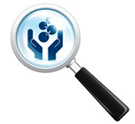Vol.
33 No. 3
May-June 2011
 |
|
by Gail Krantzberg and Peter Topalovic
In 1996, 80 Haitian children died from ingesting cough syrup tainted with diethylene glycol (DEG), a chemical commonly found in antifreeze. (more) |
|
by Robert W. Slater
This article explores how critical events can be turning points in defining policy agendas for both the private and public sectors and for civil society. (more) |
Responsible Care, which began in Canada in the early 1980s, is an important initiative of the worldwide chemical industry. Now adopted in 54 countries, the program is about building trust through ethical behavior, listening attentively to the evolving concerns of the public, and providing responses that clearly demonstrate the concerns have been heard.
In 2006, the IUPAC Committee on Chemistry and Industry (COCI) began a project to assess the history of Responsible Care and develop a case study of the program (project 2006-047-1-022). The now-completed project produced a couple of documents and teaching aids that are available to anyone interested in exploring Responsible Care in more detail. The first paper presented here, by Gail Krantzberg and Peter Topalovic, is a summary of the case study of the 1996 tragedy in which 80 Haitian children died from ingesting cough syrup tainted with diethylene glycol (DEG), a chemical commonly found in antifreeze. The second paper by Robert Slater is based on his presentation made at the 3rd IUPAC Conference on Green Chemistry (August 2010) and uses the Bhopal and Gulf BP incidents to explain how critical events can be turning points in defining policy agendas.
Although the application of Responsible Care has lead to significant improvements in the performance of the industry, incidents continue to occur. There are still many improvements to be made even within the industries that already adhere to the principles of Responsible Care. The articles contained in this issue of CI should help spark discussions about this important topic.
Bernard West <[email protected]> was chair of IUPAC project 2006-047-1-022.
www.iupac.org/web/ins/2006-047-1-022
Page
last modified 17 May 2011.
Copyright © 2003-2011 International Union of Pure and Applied Chemistry.
Questions regarding the website, please contact [email protected]
|